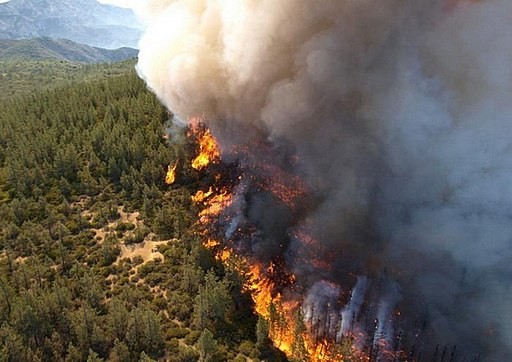In recent years, climate change has increased the number and severity of wildfires worldwide. Projection models also indicate that the environmental and economic damage caused by wildfires will spread and escalate in the coming years. While studies focus on the impacts of this disaster on land, a new study reveals the rapid changes in aquatic ecosystems due to wildfires.

Effects of Wildfires on Land and Air
Every year, fires of various intensities and extents destroy large portions of forests worldwide. Valuable forest assets, like carbon sequestered in biomass, are destroyed through wildfires, resulting in an unfavorable effect on the forest inhabitants and the transport of forest-derived products.
Global fires have a widespread impact on the carbon cycle due to immediate direct carbon emissions. As terrestrial carbon is liberated, it produces greenhouse gases and aerosols that influence the radiative balance of the atmosphere. It unleashes vicious cycles of climate and ecosystem instability, further increasing global warming.
Wildfires also serve as significant disturbances that affect biological communities and transform the biogeochemistry of terrestrial ecosystems. For instance, wildfires generate pyrogenic materials that destabilize soil structure and cycling of organic matter. Aside from this, forest fires mobilize nutrients like nitrogen and phosphorus, affecting nutrient retention with long-term impacts on soils and vegetation.
Effect of Wildfires on Aquatic Ecosystems
At the School of Biological Sciences at the University of California, researchers compared how the input of burnt plant matter transforms aquatic systems. Their results are discussed in the study "Fire Transforms Effects of terrestrial subsidies on aquatic ecosystem structure and function."
The experts, led by Professor Jonathan Shurin, conducted the 90-day study on experimental pond systems in the Sierra Nevada mountains. They tested different amounts of burned and unburned plant matter on days 10, 31, 59, and 89.
As part of the study, the team fertilized sage plants with nitrogen to track the movement of the chemicals from the leaves of dead plants. This labeling method allowed them to follow nitrogen into the food web and through plankton and determine the difference in nitrogen transfer in response to burning.
By using the nitrogen tracer in plant materials, the researchers discovered that less burned plant-derived nitrogen was incorporated by zooplankton, indicating a reduction in nitrogen transfer to higher organisms. This agrees with other findings, which revealed that burned treatments had greater oxygenation, lower carbon dioxide concentrations, and higher rates of photosynthesis relative to unburned treatments.
According to Shurin, burning changes leaves' chemistry, affecting their cycling through aquatic ecosystems. As the impact of burnt matter rose, the experimental ponds shifted in the makeup of their inhabitants. Unburned test ponds showed species characteristic of marine systems like zooplankton, while ponds with heavy loads of burned material were transformed into havens for insects like mosquitoes.
The researchers also noted that such impacts were shifted by fire treatment. As burning increases detritus's elemental and organic composition, it leads to cascading effects on ecosystem function.
RELATED ARTICLE: Behind Post-Wildfire Mudslides and Floods: Scientists Discover Surprising Role of Underground Water Accumulation
Check out more news and information on Wildfire in Science Times.














